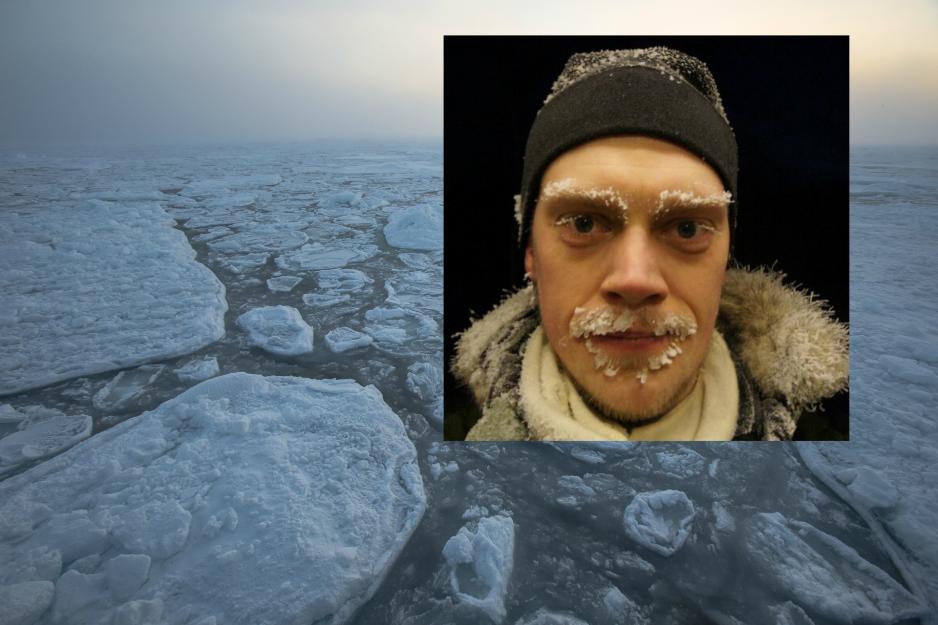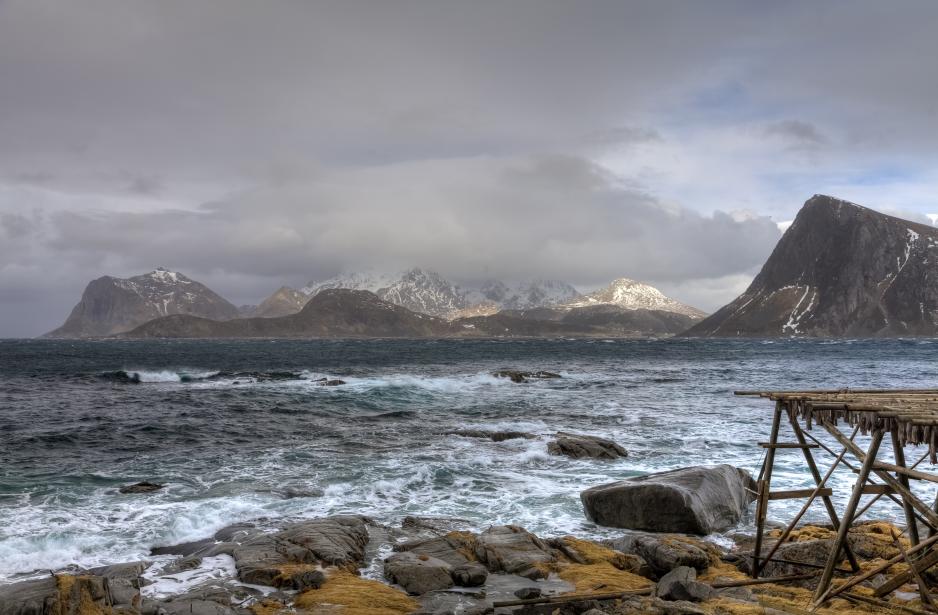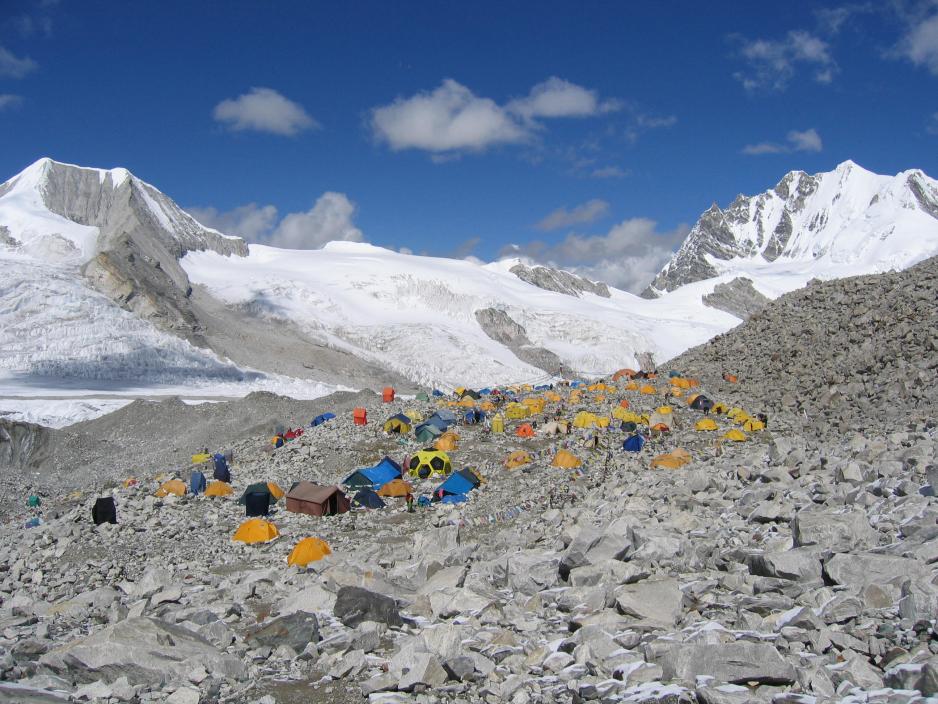One Doctor’s Fascination with the Human Body in Extreme Nature

Doctor Erik Sveberg Dietrichs (32) is so fascinated by the human body’s reaction and endurance limit in extreme situations that he has written a book about it. His book ‘On the Edge of Life’ is about what happens with the body when we go to places where we should not go.
- Man is an extremely adaptable creature. Large groups of people have settled in areas with extreme conditions. Expeditions hit the top of Mount Everest, people spend winters in Antarctica and they dive into the Mariana Trench. We are simply going to places we really should not endure, Dietrichs says.
The 32-year old lives in Tromsø and says his interest in what happens in the body when exposed to extreme cold, heat, height and depth took off when he did research into hypothermia, when the body is cooled down.
- ‘On the Edge of Life’ is about the extremes in nature, about the very absolute limits of what the body can endure of extreme conditions. And there are four such extremes; height, cold, depth and warmth. The book is a popular science book aiming to tell of what happens to the body, in combination with exciting stories about people, the author says.
Names like Amundsen, Nansen and the WW2 resistance hero Jan Baalsrud come up. Though it is equally exciting with those who chose to live their lives in areas where no one thought people could survive in a time when man had rather little resources and few aides.
- Polar explorers and those who go on expeditions are one thing. I am perhaps even more fascinated with poor people who went seal hunting, built a cabin and spent winters on the periphery year after year in order to provide food, Dietrichs says.

Perfected lifestyle
The doctor is very interested in how the body adjusts to the surroundings – how people have survived expeditions, settlements and not to mention wintering in desolate areas covered by ice, surrounded by extreme weather and biting cold – against all odds.
- Think of trappers on Svalbard and Greenland, those who have gone to desolate areas to hunt their food, chase some furs. They were brought in and had to wait for the ice to dissolve before they could return home, Dietrichs says.
He mentions the Inuit, the rough indigenous population whose individuals haves perfected their lifestyle and their clothes through generations in order to survive. And who enjoy this.
- It is exciting to see how these people learn ways of life that allows them to survive in areas where the body is not really suited for survival. And this is not just evolution over time. Studies have been conducted on people who winter on a base in Antarctica, and as it turns out, the core temperature of the body changes in a given climate, Dietrichs says.
Thin men with a low Body Mass Index would acquire subcutaneous fat.
- Thin men got more fat on their bodies, despite the cold. It is about how the body runs the blood. There was less blood for toes and fingers, but the rest of the body got warmer. The climate changed the body’s response to managing the environment, the researcher tells High North News.

Endure the cold better
People can survive with very low body temperatures. According to Dietrichs, we endure cold temperatures better than heat.
- For instance, lowering the body temperature by four or five degrees for adults is considered moderate hypothermia and is also used in the treatment of heart patients. Increasing the body temperature by four or five degrees, however, is very much, the doctor says.
Nevertheless, moderate hypothermia is not risk-free and it can lead to heart arrhythmia as well as other complications, while at the same time the cold protects the brain.
- Persons with severe hypothermia can still have a pretty good chance of survival, provided they receive correct treatment, Dietrichs says.
In his book, he describes the story of how a little boy falls through the ice while playing on it. He disappears in the cold water. It takes 40 minutes from his disappearing until divers locate him underneath the ice. His core temperature was 24 degrees, yet life-saving treatment makes his heart start beating again. The boy wakes up and then asks for his glasses.
- It is all about how the cold protects the brain against damage, and the protective effect is bigger the colder we get, he says.

The Arctic Human
- Are people in Arctic areas better suited for the cold than for instance people from warmer climates?
- People in the Arctic have a different way of handling the cold. People who have been fishing in cold waters have better blood flow in their hands. Yet it is not genetic – acclimatizing has a bigger effect, and it is simply a matter of how long time one has spent in a given area, Dietrichs says.
He mentions a group in the High North that is very exposed to cold, even though they have hands that can endure it better than the average population.
- Fishermen. In their daily work, they risk shipwrecking or falling into the sea. Low sea temperatures represents a big danger, and in addition to the risk of hypothermia, there is also the risk of drowning, the doctor says.
As the water cools down the body and the core temperature drops, the brain is affected and under such conditions, it is ominous. Because despite solid survival suits and high tolerance and thus a genuine chance of survival in the cold, there is still a high risk of dying, even if the body and the brain can endure hypothermia.
- As the water cools down the body and the core temperature drops, the brain will be affected. That leads to the loss of the ability to keep the head and the airways above water. Nevertheless, the cold may also save people and be a protective factor in drowning accidents, Dietrichs says.
From the bottom to the top
Today, people live scattered across the entire globe, including the Antarctica, if one takes wintering scientists into account. Yet what really fascinates the doctor and writer is how people handle extreme nature.
- Most of us live in a temperate climate and in areas where it is possible to gather sufficient amounts of food when political agendas, violence, disease and conflicts are not in our way. Nevertheless, some cultures have emerged in very inhospitable areas where man has had to adjust to significant physiological challenges. Areas that are simply not reconcilable with the physiology of the body if we had not had ways in which we can isolate the body from its surroundings. What happens to us in these particular areas is incredibly exciting, the author says with a smile.
The book spans from the bottom of the Mariana Trench to the top of Mount Everest, where the remains of Mallory and Irvine still reside in the Death Zone, because the climbers never made it back to the tent camp.
- We also take a trip to the steaming hot Death Valley. And last, but not least, I have taken a look at Amundsen and Scott’s freezing trip to the South Pole. Through history, I try to investigate how it was possible to survive and what happens when people push boundaries and live to the outermost extreme, Dietrichs says.
Les artikkelen på norsk
